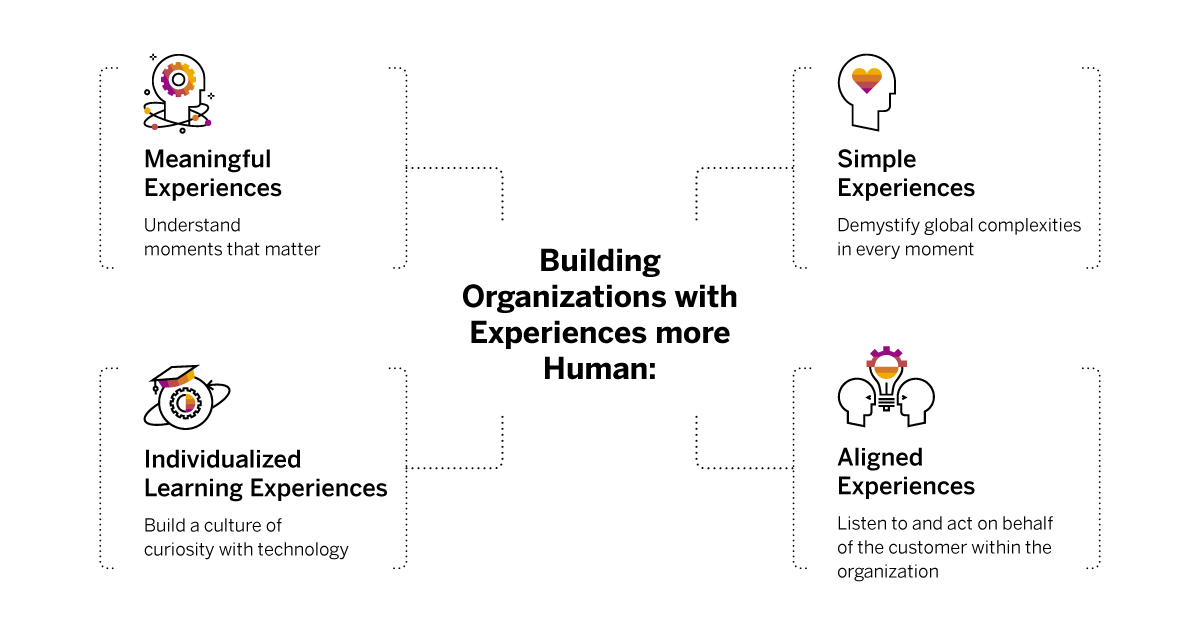The purpose of human experience and resources has changed the post-pandemic world. In a matter of a few weeks, we saw whole office complexes fall silent. As millions began working from home, we saw a large majority of the workforce re-evaluate their life and career choices. The “Great Resignation” followed, and wages increased even as the labour market tightened. In this uncertain business climate, Human Resources stepped up, meeting the need to reimagine, reinvent and recalibrate for a new world of work. As CHROs around the world negotiate this upheaval, we are seeing pages of HR history being written as it transitions from being a support function to a pivotal force, and a true strategic partner to business success.
To fashion the future of the workplace, CHROs must reimagine the basic tenets of organization. This calls for workplace models that are creative, adaptable and antifragile. Through the lens of a fast-approaching future, talent replaces labour. Networks of teams replace hierarchies. An ecosystem of collaborators replace competition. Ultimately, the workplace becomes more human: a nurturing space that can be in equal parts inspiring, collaborative, and bent on creating an employee experience that is meaningful and enjoyable.
Reimagining Basic Tenets of Business

While the nature and purpose of the HR function have been evolving for years, the demands of the pandemic dramatically accelerated this transition. It is clear that in the next two to three years significant changes to the HR operating model are on the way. As the future unfolds, HR is becoming as relevant to business success as core functions like R&D, sales, or production. It now needs to ensure a company can still be operational during the pandemic.
Future focused CHROs are stepping up to this new responsibility, leading a change that requires HR to transform itself, adopting the organizational principles and key performance indicators of core business functions. HR leaders need to drive more agile and fluid organizations, shift the role of business partners, and drive the employee experience—and do it all with a clear leadership mandate. At the heart of this change is the adoption of technology, not just as a tool but as an enabler of thought, translating into action. In this article we break down the top concerns of CHROs, to carve a greater share of the future of human capital for stakeholders.
Nurturing Culture for Human Experience
An organization’s culture is simply a repeated set of actions that become a part of its practice. But shaping culture in a changing world is a steep challenge. There is ceaseless debate over who the custodians of culture are. It is easy to lose sight of the way this culture is actually shaped across the business. The truth does not lie in operating manuals or on-boarding decks or policy documents. Culture is shaped in moments that matter.
HR needs to shift its focus from a pure-process orientation to the customer journey and identify the moments that matter for the employees in their interactions with the company. Organizing around the employee experience by taking an approach similar to how retailers define customer journeys—in this case, by identifying the employee moments that matter most and deploying resources accordingly. For example, critical moments for employees could include the recruitment process, onboarding, performance reviews, and promotions, and the roles and responsibilities of the HR function could be aligned around them.
Leveraging Technology for a more Human Future
For years now, CHROs have found themselves using technology as a cost-efficiency treadmill. Deploying analytics and big data to existing HR operating models was the go-to norm. Technology adoption entailed a worthy but uninspiring mandate: optimizing labour costs and reinforcing compliance using standardized measures.
Even in areas of HR that were loaded with cultural significance for the organization such as recruitment and learning, the emphasis with technology has been on productivity, and how to measure it. For CHROs, the question has now become whether processes have replaced the creativity and innovation they need to attract and develop talent, manage and reward performance, and optimize workforce strategy. If the future of work is to focus on the human, HR must employ technologies that are changing how consistent process execution and excellent employee experience are delivered.
The biggest workplace disruptor is next-generation automation technologies. Some estimates indicate that nearly half of all work could be automated with current technologies. For HR, intelligent process automation, can help deliver consistent people processes – something that has eluded many HR operations teams given the dynamic nature of the requests they receive. Cost savings also materialize through deploying such technologies as robotic process automation, machine learning and cognitive agents. Re-evaluating the level of automation of HR and providing a “human interface” to employees where personal interaction adds value. In the past, HR has automated too many tasks. It needs to provide a real human interface at points in the employee journey where personal contact is generally expected. Elevating HR through digitalization by automating processes, especially traditional administrative tasks; by gathering, analysing, and acting on employee data to make more informed decisions; and by implementing mobile self-services to elevate the quality of delivery. CHROs must drive conversations that begin by thinking of solutions, data, and employee experience when talking about digitalization in HR.
Unlocking Design Thinking for Human Experience
Imagine a world of work where management began with what people need rather than adhering to a process? As the future of work unfolds, CHROs are increasingly turning to Design Thinking as a tool to bring a “Human-Centric Approach” to their organizations. At every single step of the organization design process, teams are empowered and accountable to gather user insights. These insights pose a powerful question that begins with: “How might we…” The power of this question is almost hidden at first. “How” represents a solution-oriented approach, “might” encourages optimism and “we” represents collaboration. Teams are encouraged to inspire new thinking by discovering what people need, and not retro-fitting need to what the organization already is.
Stripped of the hype and jargon, design thinking in HR is simply a process that prioritizes the employee’s needs and then creates solutions around that problem. The learnings are based on empathetic observations of how human behaviour in specific environments and reactions to these happenings in that environment. Thus, the approach is a hands-on method of creating innovative solutions. The human element of thinking is at the centre of the design. Design thinking processes are created around humans, and not simply for humans. Therefore, it relies on evidence of how humans behave towards a product or service and continuously improves that experience.
The method we all know and use to solve problems is to identify the concern, then investigate and find solutions. Design thinking doesn’t focus on creating one solution. Instead, it is a continuous process of adapting thought and approach to meet the end-user needs.
When applied to the world of work, especially in a rapidly changing new normal, design thinking can lead us to answers that will help the HR function be in lockstep with the needs of the organization’s most precious asset – its people.
Seeking Success– Questions to be Answered while Creating a more Human Experience
The future-focused CHRO must drive organizational transformation to create an experience that is more meaningful, simple, individualized and aligned to the business’ needs.

Meaningful: How can we create meaningful experiences for employees?
When it comes to the moments that matter, are you understanding employees’ emotions and perspectives at all touch points? Can you take action and focus experiences on what matters to the people who drive your business?
Simple: How can this global complexity be replaced with guided simplicity?
Is global compliance, local regulations, diversity, inclusion, and employee well-being getting in the way of more strategic work. Gaining full visibility into your entire workforce and automating processes is the key
Individualized Learning: Can skills and agility be individualised for employee learning and development?
When you move from traditional learning to create a culture of curiosity and growth you can build a strong, knowledgeable workforce. Leverage powerful technology to develop a workforce that can take on any challenge.
Aligned: Whose responsibility is it to align HR and employees to improve experiences and drive business success?
Alignment begins with the act of listening. Discover the importance of listening to – and acting on behalf of – employees to decrease employee turnover and negative customer experiences (CX), while minimising the risk of damaging your brand and alienating key investors.
In Conclusion…
Transforming the role of HR is no cakewalk – but it’s efforts reap rich dividends. Driving more human centric and fluid organizations, shifting the role of business partners, and elevating the employee experience are central to evolving the HR operating model—which benefits not only the function but also the broader organization.
CHROs can enable business by driving this transformation in their own HR organizations: developing and reinforcing clear priorities towards the human experience. While clearly a trial by fire, the pandemic also provides an opportunity for HR to accelerate its shift from a service to a strategic function, helping to shape a more dynamic organization that is ready to meet the post-crisis future.



